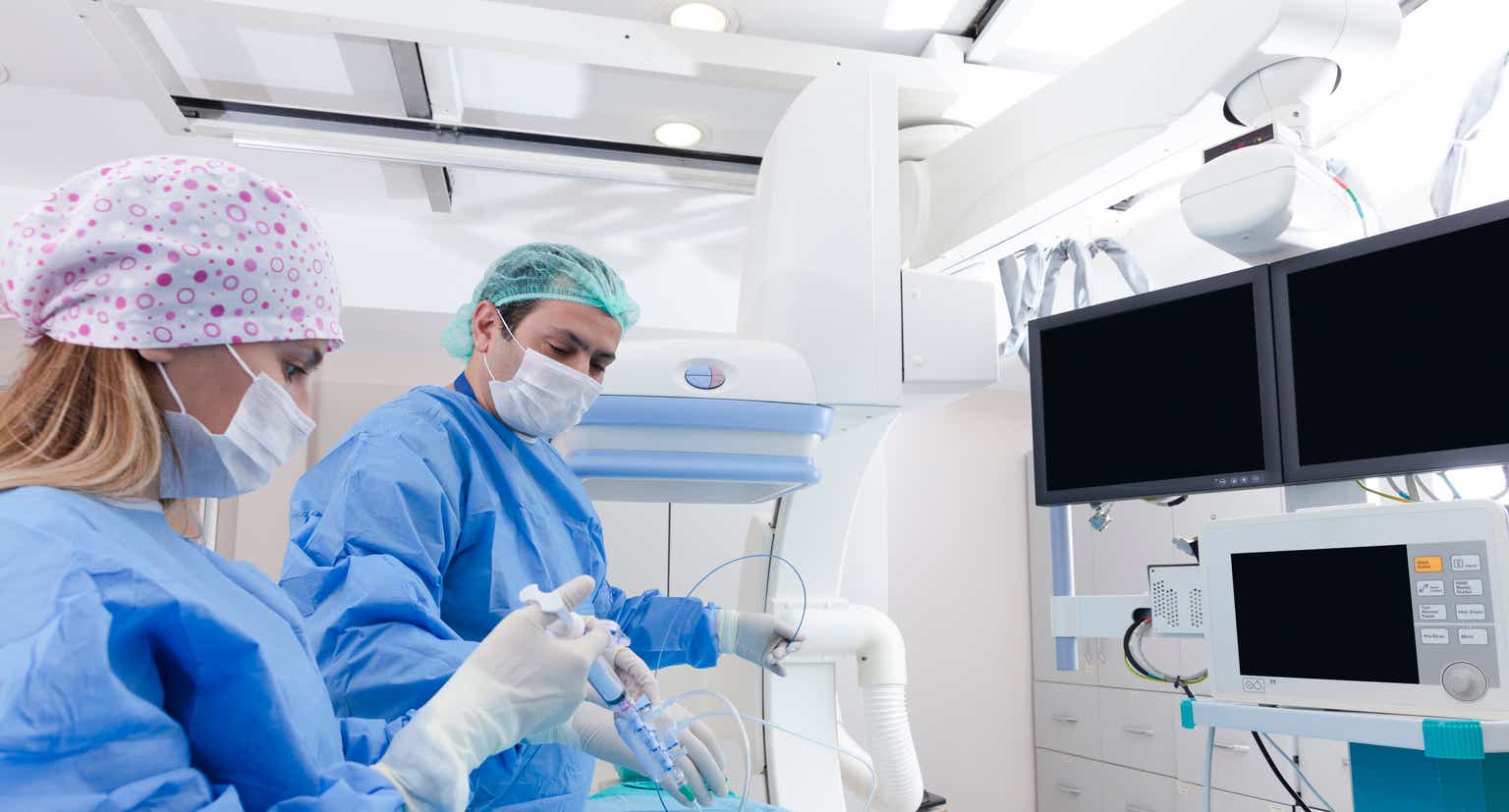Add Merit Medical (NASDAQ:MMSI) to the list of medical technology companies that have been caught up in a broad sector derating. Merit Medical shares are down almost 20% since my last article on the company, basically tracking the broader med-tech space despite a couple of respectable quarters. While pressures from value-based pricing in China have limited the upside to estimates despite better-than-expected reported results, I would certainly argue that Merit Medical as a company isn’t 20% worse today than it was in the summer.
Making matters more aggravating, Merit’s valuation wasn’t stretched going into this correction, and if anything these shares are starting to look quite a bit more interesting even with a more conservative valuation framework for med-techs (or at least more conservative relative to the past few years). I’m not suggesting investors need to step into oncoming traffic in the cause of bargain-hunting, but I do think that Merit Medical’s valuation is too low relative to mid-single-digit long-term revenue growth potential and improving margins and free cash flow generation.
Healthy Q3 Results
Merit Medical is establishing a good track record with its recent quarterly performance, and another 3% beat on the top line versus Street expectations certainly doesn’t hurt, and nor does some outperformance in operating leverage.
Revenue rose about 7% in organic terms, with 10% growth from the U.S. business and 3% growth from the overseas business. While the latter number is lackluster, value-based pricing is creating headwinds for the business and looks to have compressed growth by about four points in the quarter.
Growth was reasonably diverse in the quarter, with the Cardiology business up 10% overall and Endoscopy up 11%. Within Cardiology, the Peripheral business grew 9% (organic), Cardiac grew about 3%, Custom Solutions grew 6%, and OEM grew 11%. Helping drive above-expectations results, management noted that the products it acquired from AngioDynamics (ANGO) exceeded their initial expectations, and while this is a single datum point, it would at least anecdotally support my concerns that there are more meaningful sales and execution issues at AngioDynamics.
Gross margin rose 30bp (to 45.1%) as reported and 140bp in non-GAAP terms (to 49.8%), missing expectations due to product and geography mix. Operating income rose 25% (non-GAAP), though, with margin up 220bp to 18.3%, and this was better than expected on lower operating expenses (SG&A in particular).
Comparisons to other companies are challenging, particularly as most of the comps really aren’t all that comparable. Boston Scientific (BSX), for instance, reported healthy results in its peripheral intervention business, and Philips (PHG) too saw good results in its Image-Guided Therapies business, but Abbott’s (ABT) performance in Vascular was rather lackluster.
All told, I believe the peripheral intervention market is healthy now in terms of procedure volumes (helped by better staffing levels), and Merit is benefiting from that activity. Given the growth of 19% in angiography, delivery, and radar localization, as well as the growth of 15% in drainage, I believe Merit is outgrowing the market and gaining share, though some of this strength could have been tied to restocking.
Waiting To Unwrap Wrapsody
Wrapsody, the company’s proprietary endovascular stent graft for AV access in dialysis patients, remains a key future driver. The company finished up enrollment in the pivotal WAVE study a few months ago and follow-up should be over in February of 2024. Management expects to file by midyear of 2024, and a launch in the U.S. before the end of 2024 is still possible.
With an addressable market opportunity of close to 500,000 patients a year, this should be a significant product for Merit (around $100M in revenue), and early acceptance in a handful of overseas markets has been encouraging.
A New Plan Is Coming In 2024
Merit is in the end stages of its prior long-range plan, and while not all of the initial targets will likely be met (COVID-19 certainly didn’t help), the plan has overall still been a success. Margins have improved meaningfully, with EBITDA margin improving from the low-to-mid-teens to 20% last year and likely around 22% this year, and the company has likewise upgraded its longer-term revenue growth potential.
There has also been more discipline on M&A, even if not entirely by the company’s own choice (there was activist investor involvement in the past). M&A doesn’t have to be, and shouldn’t be an all-or-nothing proposition, but I think improved discipline has been good for the business and its shareholders – I liked the AngioDynamics deal, and I think there are going to be future opportunities to acquire complementary products and/or emerging products that could be material for Merit and that the selling company may not be able to commercialize effectively on their own. Along those lines, while the company hasn’t announced another new product like Wrapsody, I do think management would like to develop more PMA-type devices in the future.
With all of that in mind, I would expect the next long-term improvement plan to resemble the old plan, but likely with a greater focus on a disciplined increase in operating scale – using selective M&A and innovative R&D to create more revenue growth opportunities and more operating scale down the road. I’d also note that the company continues to work on a CEO succession plan, with an announcement expected before year-end.
The Outlook
My revenue expectations for FY’23-FY’27 are a little higher now than before, but not materially so and the net impact on my long-term annualized revenue growth rate is only about 0.1% (still between 6% and 7%). Wrapsody remains a significant potential growth driver, but not the only one, as the company has been demonstrating that it can drive growth and share gains across multiple product categories.
I’ve modestly upgraded my margin expectations, and I’m looking for mid-20%s EBITDA margins in 2025 and beyond. I’m also expecting free cash flow margins to reach the mid-teens in the coming years and expand to the high end of the mid-teens over time driving adjusted FCF growth of around 10%. I should note, though, that while margins have certainly improved of late, this is not exactly a conservative assumption – prior to the company’s self-improvement plan, low single-digit FCF margins were the norm.
The company has logged two years of double-digit FCF margins in recent years (2020 and 2021), but again this would represent a meaningful long-term transformation in the profitability of the business. This is also why I believe M&A could become a more explicit part of the growth plan again, as Merit will be generating healthy amounts of free cash flow if these estimates prove accurate (and I expect at least some of this to go back to shareholders).
Discounting those cash flows back, Merit isn’t as cheap as I would like (an implied long-term annualized total return in the high single-digits), but that’s not uncommon in med-tech.
Growth and margin-driven multiples-based valuation is where things get interesting. Historically there are pretty reliable relationships between revenue growth, margins, and forward EV/revenue multiple for med-tech companies, and Merit’s valuation is more attractive by this approach. The growth I expect over the coming three years should support a 4x forward multiple or a fair value in the mid-$80s. While med-tech has been re-rating lower, this 4x multiple is generated with the “old rules” (in recent years med-tech multiples have stretched beyond normal historical levels), so I see less derating risk here.
The Bottom Line
I don’t know when med-tech stocks will find their bottom, but it probably won’t be today or tomorrow. While I think the correction has already been excessive in some names, I can’t argue that multiples were stretched for a while and the market could flip the script for a little while, particularly with widespread fears about how long-term use of GLP-1 drugs may impact many device/treatment markets.
While there’s some risk to Merit from widespread use of GLP-1 drugs (fewer patients needing dialysis and/or coronary interventions), I don’t think it’s a material risk for many years. In the meantime, I do still like these shares but I advise some caution in “fighting the Street” and taking a big position in med-techs while institutions are still bailing out.
Read the full article here









Leave a Reply